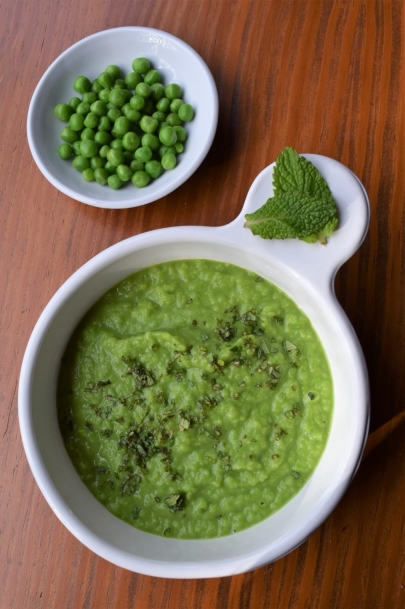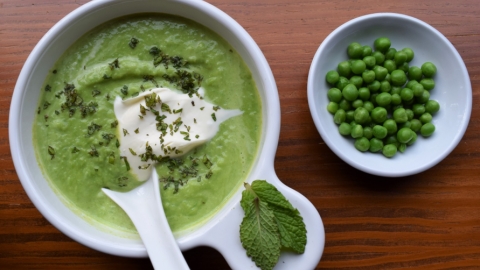A Fresh Appreciation for Pea Soup
Peas are often the first seeds to be planted and one of the first to be harvested. If you planted peas when the ground first thawed, they will be ready in two or three months, in May perhaps, or even earlier if you overwintered them. In modern times, we often eat them fresh from the pod or sautéed with a little butter and pepper as a side dish with chicken or pork. Peas are a classic addition to pasta dishes and pop in the mouth with tiny explosions of rich flavor.
These sweet and tender spring vegetables seem delicate but, as medieval English cooks knew, dried peas are a hardy, year-round staple. Once dried, they can be put into a soup with salt and spices and go well with bacon or a boiled ham joint. In the large pots of peasant homes, peas became one of the most common bases for leftover meals, mixed into a stew or pottage, later called “porridge.” The rhyming song, “Pease Porridge Hot,” was sung in the 1600s, at the same time the dish was brought to New England. However, the vegetable never became as popular here, with its cousin, corn, taking over as the base for mushy porridges. Even Lydia Maria Child, writing in The American Frugal Housewife, couldn’t muster much enthusiasm for dried peas, recommending simply stewing slowly “in considerable water, with a piece of pork” for four to five hours.
Just to the north, 18th-century French-Canadian voyageurs had a better appreciation for the vegetable. While engaged in long canoe trips as part of the early fur trade, they found that dried split peas made for a fine staple food, easily transported and turned into a hearty soup, high in protein and fiber. The peas did not need to be soaked like beans, and with the addition of a little meat and hardtack biscuits, they became a bland but nutritious and filling cook-pot dish. Back home in Montreal or Quebec City, cooks added celery and other vegetables, along with salt and pepper.
Many French Canadians brought this dish to Connecticut when they arrived in the late 1800s looking for work in our brass and textile factories. Keeping their language, values, and Catholic religion, they settled in places like Jewett City, Danielson, Putnam, Bristol, and Waterbury, where the 100-foot St. Anne’s church steeples were a key part of the city’s skyline, until they were removed in 2019. Versions of French-Canadian Pea Soup and other northern delicacies were served in local neighborhood restaurants and homes throughout the 20th century.
Although dried or frozen peas have become winter staples in Connecticut, enjoyed with Thanksgiving turkey and New Year’s ham, fresh shelled peas are especially delicious and showcase the sweet taste of the spring season. Eating peas “green,” while they are immature and just picked off the vine, became popular in recent centuries, as new cultivars developed, and faster shipping allowed the consumption of fresh peas nearly year-round.
In the ancestral French-Canadian homeland – France, of course – Potage Saint-Germain is a dish that modern gastronomes might sample at the finest Parisian bistros. Named for the Paris suburb where residents cultivated peas in market gardens, this simple soup offers a striking green color and fresh garden scent. It’s easy to make at home, great hot or cold, and a perfect addition to every Connecticut cook’s repertoire, especially if you grow peas in your own garden. If freshly shelled peas are not available, frozen peas work almost as well. Check out the recipe, below, to try it yourself!







